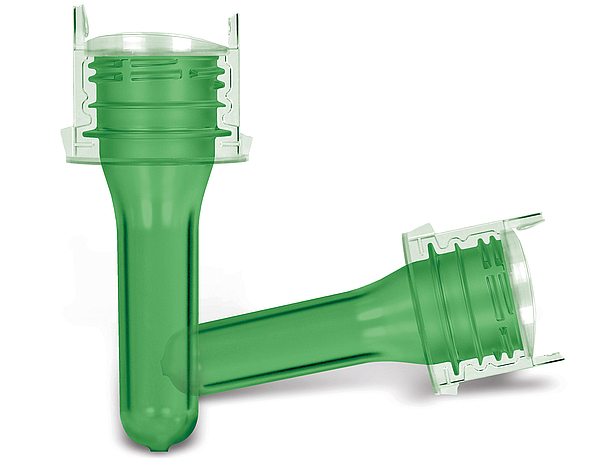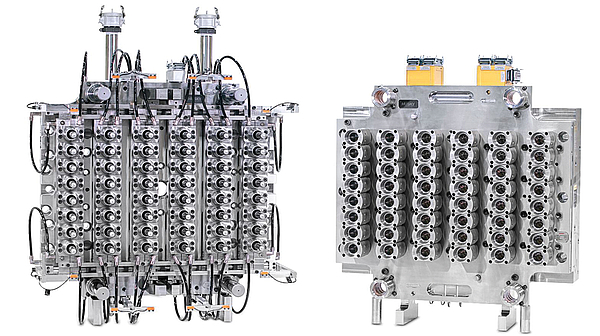

Surviving and Thriving in the Pandemic
3 Practical ways beverage producers are adapting to COVID-19
This article shares practical, real world examples of how Husky customers are surviving and thriving during the pandemic.
At the beginning of 2020, few people could have imagined the changes we have witnessed so far this year. In a matter of months, COVID-19 has become a dominant force shaping everything from our personal lives to global financial markets. Previously unimaginable events and circumstances have now become commonplace. All part of the “new normal”.

In one such example, Coca-Cola announced in June that they had adapted one operation to produce test tubes for COVID-19 testing kits.
Who would have thought we would see such a headline?
This story really encapsulates two key things about COVID-19: the uncharted territory we find ourselves in, and the rapid adaptation we have seen in response to changing circumstances and opportunities.
And it’s just one example from countless others. Around the globe, beverage producers are rapidly adapting in order to survive and thrive in this period of uncertainty and market change.
What’s changing?
A recent McKinsey report identified a handful of key market trends that have emerged or accelerated during COVID-19. These trends include:
- a growing demand for hygienic packaging solutions
- rapidly changing consumer preferences
- increased focus on sustainability
- increasing cost pressures
What it takes to succeed
From the beginning of the pandemic, our customers have asked for Husky’s help to adapt to these challenges and take advantage of new opportunities.
Here are the top three ways that our customers have adapted in order to survive and thrive during the pandemic.
1) Finding ways to quickly adapt production
As the Coca-Cola example illustrates, the first trend we are seeing is rapid adaptation to produce new applications. Some of these new applications, such as test tubes, provide direct support in the fight against COVID-19. In other cases, new applications are a response to rapidly changing consumer preferences and market demand.
In one example, a major North American converter wanted to rapidly adapt its PET preform operation to produce a hand sanitizer application. By working in parallel, we were able to build the new mold required for the application while shaving 50% off the normal lead time. We were also able to reduce the downtime required for changeover to a single shift. This helped the customer go to market with unprecedented speed and with minimal disruption to production.
We have also seen rapid adaptation driven by short-term changes in local market demand. For example, one African customer needed to make application changes in response to a regional spike in demand for dairy and edible oils. In this case, Husky provided a novel solution to help them capitalize on the market opportunity by making quick application changes.
By providing a hot runner on temporary loan, we enabled this customer to quickly double their production output in order to meet the extra demand.
Whatever the reason for the change, a successful adaptation requires fast, creative thinking, and a holistic approach to the solution design. When you need to adapt quickly, be sure to consider how the proposed solution will help you minimize:
- lead time
- downtime
- risk
- CAPEX required

2) Increasing productivity and uptime
The next adaptation strategy we are seeing is a series of efforts to maintain productivity, uptime, and efficiency. This is about ensuring you can meet demand without interruption while delivering the highest quality.
So how are organizations doing this in the COVID-19 era? Here are a few recent examples.
Rapid refurbishment
One of our North American customers was preparing to supply a high quantity of closures for new COVID-19 testing kits. To meet the new demand with the highest quality output and minimal downtime, the customer wanted to refurbish their hot runners. A hot runner refurbishment can typically take five to six weeks, which would have delayed production of new parts. In this case, a hot runner loan allowed the customer to continue production while we refurbished their existing hot runner, reducing the total downtime to between four to five hours. With the refurbished hot runner in place, the customer was ready to supply new parts with minimal changeover time and maximum quality.
Self-cleaning molds
Another innovative way to reduce scheduled downtime is through the use of self-cleaning molds, which are a patented Husky technology. Mold cleaning is an essential part of preventative maintenance and quality assurance, but it does result in lost production hours. With Husky’s selfcleaning mold technology, the time to clean a mold is reduced from three or four hours down to seconds, or the length of a single cycle. This technology helped one North American producer maintain high quality output and produce an extra 10 million preforms in the first three months of the pandemic alone.
Holistic operational efficiency assessments
Not every producer is seeing a spike in demand during COVID-19. However, these producers are not sitting idle. They are using the opportunity to regroup, prepare for the recovery and the coming spike in demand. To do that, they are taking a more holistic approach to uptime and quality, conducting an operational efficiency assessment, such as that offered by Husky’s Excellence Program. The process involves assessing your operation, benchmarking your metrics against best-in-class, defining the gaps, and developing solutions to maximize your overall operational effectiveness. The typical results of these exercises include:
- 10-15% reduction in operational costs
- Up to 8% higher OEE
- Up to 24% internal rate of return
Numbers like these make it easy to see why an operational efficiency assessment is a great way to prepare yourself for success both today and into the future.

3) Reducing production costs
The third strategy we are seeing involves efforts to minimize production costs. Cost reduction is always top of mind for our customers, but we are seeing a real acceleration and increased emphasis on this during the pandemic.
While there are many ways to reduce overall production costs, lightweighting is one of the most popular methods right now. As a strategy, lightweighting has been around for a long time, and the premise is very simple. Every gram of resin you can remove from a finished preform or closure directly impacts your bottom line.
So why is lightweighting so popular right now?
- Firstly, because lightweighting technologies and approaches are always evolving, it is possible to achieve greater and greater savings while still achieving high performance and premium consumer experience.
- Another key reason is speed. Some approaches to lightweighting offer very quick turnarounds, in some cases seeing results in as little as six weeks. This is a strong selling point for organizations seeking quick solutions during the pandemic.
- Finally, not only does lightweighting drive greater profitability, it also supports our customers’ sustainability objectives. For example, lightweighting can be used to offset the higher price of recycled PET.
During the pandemic, we have helped our customers achieve significant weight reductions in a variety of applications. For example, a Latin American bottler reduced the weight of a PCO 1881-based water application by 1.5g (13.5 percent). A Southeast Asian brand combined several approaches to lightweighting to achieve 2.34 grams in total weight savings.
To achieve these savings successfully, it was essential to get the overall balance of the package design right. To do that, our customers underwent a thorough conversion assessment and package validation to ensure high performance, quality and an uncompromised consumer experience.
The comPETence center provides your organisation with a dynamic, cost effective way to promote your products and services.

magazine
Find our premium articles, interviews, reports and more
in 3 issues in 2025.






